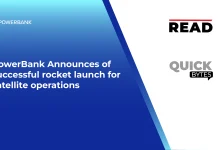Napatech™ the leading provider of programmable Smart Network Interface Cards (SmartNICs) used in telecom, cloud, enterprise, cybersecurity and financial applications worldwide, announced the integration of 5G User Plane Function (UPF) offload within its Link-Inline™ software suite. This will enable communications service providers (CSPs) to maximize the number of users supported in an edge or core data center.
Also Read: Adentro Joins WBA to Drive Seamless Wi-Fi Experiences
Unlike in most 4G networks based on purpose-built appliances, the 5G packet core is implemented as virtualized or cloud-native software running on servers located within edge and core data centers. As CSPs worldwide scale up the deployments of their 5G networks, they face strong financial pressure to maximize the number of users that can be supported on each server, whether individual subscribers or IoT devices, thereby minimizing the net cost-per-user.
Within 5G packet core software, the subsystem that represents the highest compute workload is the User Plane Function (UPF), which performs critical packet inspection, routing and forwarding functions associated with connecting user and device traffic from the Radio Access Network (RAN) to the Data Network (DN). General-purpose server CPUs aren’t well suited to the performance and latency requirements of real-time packet processing, so CSPs and 5G core software vendors typically adopt solutions for offloading the UPF to accelerator cards that are optimized for executing such workloads.
Napatech addresses the key business challenges around packet core deployments through its new, integrated hardware/software solution that delivers industry-leading UPF performance. The solution comprises a fully offloaded UPF fast path implemented within the Link-Inline™ software stack, running on programmable PCI-Express (PCIe) SmartNICs available in configurations that support a total bandwidth of either 100Gbps (NT100 card) or 200Gbps (NT200 card). The UPF data path is implemented as a port-to-port inline or “hairpinned” architecture, which ensures that following initial setup all flows are processed on the SmartNIC with no need to pass traffic to and from the server CPU, maximizing the overall performance of the system.
Using a single 200Gbps NT200 SmartNIC to sustain 100Gbps of full duplex traffic, the Napatech UPF Offload solution processes up to 100 million concurrent flows, with a flow learning rate greater than 1.5 million flows per second. This results in a total throughput of up to 85 million packets per second on stateful connections and ensures full wire speed operation for typical packet sizes. In a representative use case analyzed by the company, the Napatech UPF offload solution enables CSPs to support seven times more users per server than with competing solutions.
“Napatech’s UPF offload solution supports industry-standard Application Programming Interfaces (APIs) such as DPDK RTE_FLOWS, ensuring a straightforward integration with existing 5G core software,” said Charlie Ashton, senior director of business development, Napatech. “Similarly, full support for Kubernetes container orchestration ensures that the solution can be deployed within a standard cloud-native environment.”




